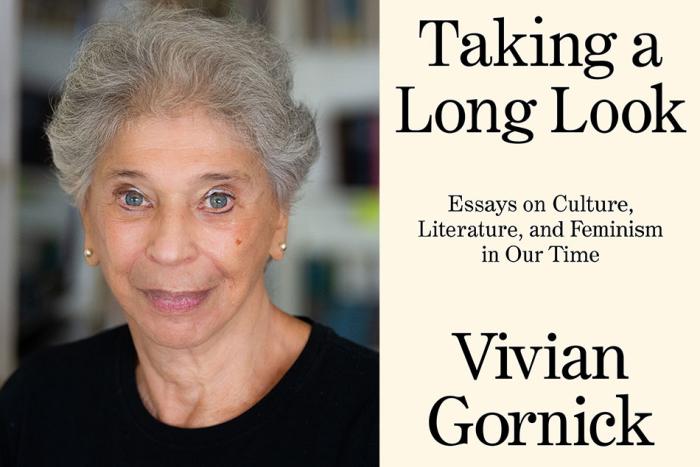One of the earliest known Canadian hip hop songs ever cut is Mr. Q’s 1979 single “Ladies Delight,” though you won’t find that in any history books. Instead, the group credited for being first in Canada on the hip hop tip in The Canadian Encyclopedia, national publications like Exclaim!, and collections like Hip Hop Around The World, An Encyclopedia is Singing Fools, an Ottawa-based duo who released the politically-charged lo-fi song “The Bum Rap” in 1982. Despite the former members of the band denying this claim fiercely on their own upload of the song to YouTube, and a growing wealth of community history and knowledge to the contrary, their name has remained synonymous with being first.
Though Mr. Q intentionally cultivated an air of anonymity, his absence from Canadian music history has more to do with the erasure of Black contributions to Canadian arts in the historical record than his mysterious persona. Following the clues Mr. Q left behind in his work reveals a Canadian music industry where few opportunities were afforded to Black artists, and where there was even less desire to substantively document how artists like Mr. Q began carving their own paths.
His debut appearance, “Ladies Delight,” is a nod to “Rappers Delight.” Mr. Q even goes so far as to diss the Sugarhill Gang in the song:
Now I heard about Sugar, I heard about Hill
Let me say they got no skill
All these guys wish they could rap
Ought to go somewhere and shut their yap
Like the instrumentals of “Rapper’s Delight,” which is a re-recorded interpolation, not sample, of Chic’s “Good Times,” Mr. Q’s tune makes use of a full band to recreate the hook from Cameo’s “I Just Want To Be.” This style deviates from the Bronx-based hip hop that was emergent at the time, where the presence and influence of a DJ was just as integral as the MC. Lyrically and vocally, Mr. Q’s rapping is playful, sometimes nonsensical, and emblematic of the period.
The song leads off a string of singles by Mr. Q that year, all released via Toronto-based label Monica’s Production. Aside from the label’s location, headquartered in Little Jamaica in the city’s west end, there’s not much to pin the anonymous artist to Toronto. But fleshing out his exact ties to the city fundamentally changes the way that the roots of Canadian hip hop are understood: shifting its growth and development from the hands of two white dudes in Ottawa to Toronto’s Caribbean community and specifically, to the basement of a cosmetic supply store on Eglinton Avenue.
***
Monica’s Production was named for owner George Lewis’s wife, whose store in the heart of Little Jamaica acted as the headquarters for Lewis’s company and record shop. (Though the record store is no longer, Monica's Cosmetic Supplies LTD still stands on Eglinton, with its yellow sign proudly marking it as the location of "George The Record Man." The Lewises still own and operate the business.) Lewis used the label as a way to put a local spin on popular musical trends and to import music from the Caribbean, releasing singles from reggae artists Hortense Ellis and Johnny Clarke, alongside local transplants Aubrey Mann and Pamela Maynard.
The cross between domestic and international artists on the label’s roster casts doubt on whether Mr. Q was in fact Toronto-based. Soul Jazz Records included one of his songs, "DJ Style," on their 2006 compilation Big Apple Rappin': The Early Days Of Hip-Hop Culture In New York City 1979-1982. But it’s Mr. Q’s last 1979 single that puts the artist firmly in Toronto. The B-side to “Party, Party,” “Party Rapp,” finds Mr. Q rapping over a driving, funkier interpolation of Stargard’s “Theme from Which Way Is Up” about a Mississauga train derailment in November of that year. The accident, which caused an explosion and subsequent leak of chlorine gas, saw 200,000 people evacuated from the suburb just west of Toronto. This detail puts the recording of his first four singles somewhere between September and December of 1979 and clearly suggests he’s one of the GTA’s own.
In 1980, Lewis changed the name of Monica’s Production to Scorpio Records, and their 1981 release Rap The Night Away offers another clue about Mr. Q’s identity and a larger picture of Canadian hip hop history. These songs were recorded in a similar fashion to the Mr. Q cuts and featured many of the same players—with a live band recreating and rapping over the instrumentals of popular songs of the time, like “More Bounce To The Ounce,” “Take Your Time (Do It Right),” and “Second Time Around.” The album features several original Mr. Q cuts, and this time offers song writing credits. Depending on whether you’re looking at a version released by Amherst Records in the United States or Scorpio’s Canadian one, the record is credited to The Bobby Deemo Band or not credited to anyone at all. (The American version is called More Ounce Rap.) Not much information about “Bobby Deemo” exists online, save for a Maisonneuve article from 2010 that is also scant on details, though it assumes “Bobby Deemo” is one person. In fact, it’s two: Bobby Boyer and Demetrius “Demo” Cates, musicians who made their way to Toronto from Detroit in the early 1970s.
“I came up to Canada to record an album,” Cates recalls of his tenure with the Detroit funk group The Fabulous Counts, who dropped the “Fabulous” from their name in 1971 for their Toronto-recorded album What's Up Front That Counts. “I loved Toronto and I wound up staying.” The vocalist and saxophonist, now 71, put down roots in the city and, save for a brief stint in New York, has called it home ever since. Though he had come up in the R&B world, with his move to Toronto came jazzier aspirations, and Cates began to gig with prolific guitarist Lenny Breau.
It wasn’t long, though, before R&B called him back, and Cates got approached by a slew of local label owners from the city’s Caribbean community to record. Among them was George Lewis. “I was doing records for these different Caribbean producers, not singing, just playing saxophone,” Cates remembers. “But George and Monica allowed me to do other things because they were starting a company—nobody had a company like theirs. They were using Black musicians, some from the city and some were from the islands, and we started producing these songs.”
Cates connected with fellow Detroit ex-pat Bob Boyer and his brother Fred, known then as The Boyer Brothers, and brought them to the sessions. “[Demo] came to me with an idea about a party type thing. [George Lewis] wanted a party record. I was like, ‘Really? What kind of situation is it?’ He said, ‘Do you know anything about rapping?’ Well yeah!” Boyer laughs. Though he was born in Windsor, Ontario, Boyer’s family moved to Detroit shortly thereafter. Looking back, Boyer describes the city as being a formative influence on his vocal style and the ability to rap well before he arrived in Toronto.
History confirms not only a rich cultural dialogue between Toronto and Detroit, but that Toronto's hip hop culture has long been supported by the city's Caribbean community. The existence of this music fundamentally subverts the notion that Canadians didn’t participate in hip hop culture until the 1980s. In fact, our connection to the emerging style happened in parallel with cities like New York and Philadelphia as early as 1979. In spite of all of that, few of the figures who did that integral work are remembered in the cultural imagination in the way New York and Philadelphia rappers, like Kurtis Blow and Lady B, are.
***
While hip hop was born in the Bronx, the art of rapping dates back much further. Scholars have tied the vocal technique to jazz, the blues, and African musical traditions. For Boyer, it was something he’d picked up off the radio in his youth in the late 1950s and early 1960s. “In Detroit, Frantic Ernie, Butter Ball, Butter Ball Jr, Nat Keller—these were the guys on the radio. When they talked, they would rhyme,” he explains. Boyer and his childhood friends would imitate the tight, rhythmic rhyming on their own. “We would go to the show on a Saturday afternoon. Didn’t nobody want to catch the bus because you could get a drink with the bus fare that you’d pay, so we would walk and we would rhyme. It would be seven to eight of us, sometimes ten or eleven, and that’s what we used to do. It’d be like playing the dozens—the kid had to rhyme. If you didn’t rhyme, you were out.”
Histories of hip hop in Detroit point to Felix and Jarvis’s 1982 single “Flamethrower Rap” as the earliest hip hop single recorded by a Detroit-based artist. It was released by Toronto’s own Quality Records. The synth-heavy post-disco R&B style bears a strong resemblance to the Bobby/Demo and Mr. Q material, right down to the interpolation of J. Geils Band’s “Flamethrower.” As the hip hop scene in the city progressed, it did so in step with techno, a high-tempo form of electronic music powered by the Roland TR-808 drum machine and synths that emerged in the wake of disco and has shaped the city’s hip hop sound ever since.
Toronto’s scene was also heavily influenced by the role of radio, especially with the arrival of DJ Ron Nelson whose Fantastic Voyage show could be heard on Ryerson Polytechnical Institute’s 88.1 CKLN FM. His show helped draw attention to hip hop development throughout North America and acted as a catalyst for more organizing and connections on the local level, fostering the scene’s steady growth. Early on, this took the form of sound systems and DJ crews, like TKO Sound, The Imagination, Kilowatt Sound, and Sunshine, who would play events that Nelson would often organize and promote. These crews and their competitions became the main touch points for hip hop in the city, and drew directly from the influence of Jamaican sound clash culture. They also provided an early introduction to many of the city’s second generation of MCs, spawning the first major-label successes by the late 1980s in rappers Michie Mee and Maestro Fresh Wes.
The absence of Mr. Q or Bobby/Demo from the history books could be easily attributed to the relatively small nature of Scorpio’s basement-run operation, so it's important to highlight that as Scorpio was releasing music from Mr. Q and Bobby/Demo it was putting out other important work by local musicians that made waves beyond Toronto, reaching pinnacles of success in the Canadian music industry. One of the last Mr. Q songs features a young Liberty Silver, who became the first Black woman to win a Juno award in 1985 for her album Lost Somewhere Inside Your Love. That year marked the introduction of the Best R&B/Soul Recording category at the awards, and Silver was nominated alongside label-mate Demo Cates, whose album Memories of Moments was his first solo LP of original material and one of several he recorded for Scorpio.
Journalist Norman Otis Richmond penned the liner notes for that 1981 record, which opened: "Canada has not been kind to creative artists in general and black artists in particular . . . Demo Cates' first solo album Memories of Moments should reverse this situation." The music being released by Scorpio inspired a real sense of hope and optimism that things would change, but for every artist on the roster who broke down barriers and forged new paths, there has been a more deliberate erasure of those accomplishments.
What’s responsible for this cultural amnesia? “[The] role of the market in determining how history is written,” says Canadian hip hop scholar Mark V. Campbell. As the founding director of Northside Hip Hop Archive, he has been working for the past decade to expand the breadth of knowledge and cultural and critical dialogue on the subject of Canadian hip hop. “[The project] is about individuals becoming conscientious of the historical process and leveraging technology and all of the digital affordances at hand to mitigate the ways in which Black life and Black musical accomplishments will be obscured and buried,” he says.
As successful and important as they are, Campbell says foregrounding later artists like Michie Mee or Maestro (or even the impact of hit singles like “Rapper’s Delight”) gives forces like sales or chart positions too much say in how hip hop culture and history is formed and remembered. That line of thinking especially promotes and reinforces a narrative that hip hop in Canada didn’t exist prior to the signing of artists and production of records by major labels, a system that historically shut out Black musicians. Through gallery shows, books, events, school curriculum, and documenting archival material, Northside’s work has been about emphasizing the community-driven aspects of hip hop culture. That college radio DJ Ron Nelson is now properly credited as a formative influence on the genre in CBC's recent This Is Not A Drake Podcast, or that Daniel Tate and Rob Bowman’s 2019 gig poster chronicle, The Flyer Vault: 150 Years of Toronto Concert History, uncovers an ad for one of the earliest known performances of hip hop in the city (on November 3, 1979, coincidentally Scorpio season) within the pages of Black community newspaper Share, is proof of the work Northside is doing in expanding the narrative beyond the industry. “[The dominant narrative] obscures the lack of infrastructure from day one that hip hop artists have been working against,” says Campbell. “The recording industry is deeply anti-Black.”
***
“‘Q’ like a question mark. It was just to keep people guessing who it was,” explains Jay McGee about why he chose to call himself Mr. Q. “I felt that at the time it was just a side thing, I thought of myself more as an R&B singer.” Over the phone from his home in Flint, Michigan, McGee recounts how, like Boyer and Cates, he came up to Toronto from Detroit in the early 1970s, and became involved with recording for Monica’s Production and later Scorpio Records. McGee had become a regular session vocalist at the studio Kensington Sound, where many of the Mr. Q and Bobby/Demo songs were eventually recorded. He says he enjoyed the challenge and wanted to be as versatile a performer as he could, but he had no aspirations of making rap his career. Boyer and Cates also shared this sentiment, although all three were careful to articulate that they still enjoyed making the music and took it as an opportunity to challenge themselves creatively as artists. “I thought of myself more as an R&B singer,” McGee recalls. “I’ve always heard singers, people who can only do a certain style of music, and I always wanted to be the person who did more than that. I’ve always practiced being rhythmic, but then I want to be a good ballad singer too. I was just trying to be everything that I felt was in me.”
Scorpio Records existed in spite of the anti-Blackness of the industry, and for many artists it acted as a supportive alternative. In 1975, Jamaican transplants Crack of Dawn became the first Black Canadian band to sign to a major label in the country. Though McGee would lead a later incarnation of that group, few opportunities like it existed for Black musicians at the time, which made a label like Scorpio a vital home for Black art and creativity. “Most of the other doors were closed to us,” McGee recalls. “To their credit, Columbia had signed Crack of Dawn, but there was nobody else on major labels. We didn’t really dwell on it, though. It produced a cohesiveness between us. We all worked together. It was amazing what was going on in Toronto at that time. We might’ve been forced out of the mainstream but we were working and learning together.”
McGee says that the spirit of community fostered by Scorpio manifested in Lewis’s relations with the artists. “George was a lifesaver. I remember one night being between jobs and not really knowing if [my wife and I] were going to eat the next day,” he says. “I was living over on Rogers Road, we were just newly married, and George knocked on the window and said, ‘Jay, wanna come to the studio tomorrow and do a couple tunes?’ He paid me that night and everything was fine.”
Though the label ceased releasing new music by the late 1980s, today that community spirit is the only thing standing between Little Jamaica and complete gentrification. While Monica’s Cosmetic Supplies remains on Eglinton in the same place it has occupied since 1965, the future of the business is unclear. Even before COVID-19, the ongoing construction along Eglinton West for Toronto’s planned Metrolinx Crosstown LRT transit project threatened to close the business and many others like it in the neighbourhood. GoFundMe campaigns have been launched, and there are calls from community-led organizations like Reclaim Rebuild Eglinton West to acknowledge the history of the Little Jamaica neighbourhood and enshrine it as the cultural hub that it is before it is completely lost. That the LRT project has been allowed to wreak as much damage as it has already speaks to the ways in which certain histories and narratives are prioritized while others are buried and forgotten.
In this context of a quickly gentrifying neighbourhood and the dominance of the Canadian major label system, the absence of Scorpio Records and its artists from national narratives around our own hip hop history is more than just a convenient oversight. The forces that conspire to wipe Little Jamaica off the map are the same as those that continue to exclude Black artists from equal opportunities within the Canadian music industry, and are the same as those that drive organizations like Northside Hip Hop Archive to tell their own histories. There is a rich history of artistry and community in Canadian hip hop outside of major label involvement, and figures like Mr. Q and Bobby/Demo point us to new ways of thinking about success and about influence. Because through community support, they operated outside a system they had no place in and completely changed Canadian music in the process.
Interviews for this piece were made possible through the support of the Ontario Arts Council Recommender Grant for Writers.






